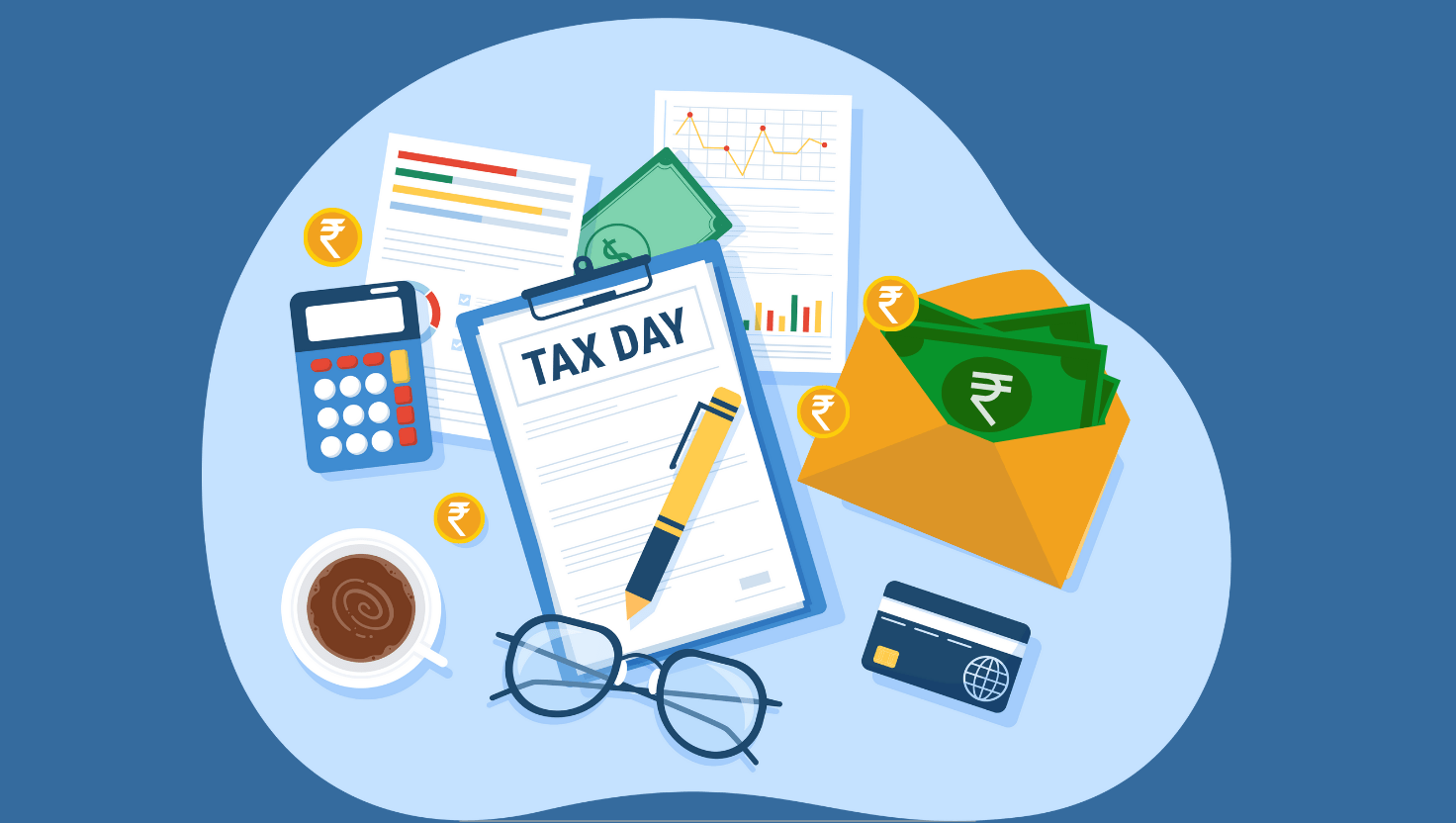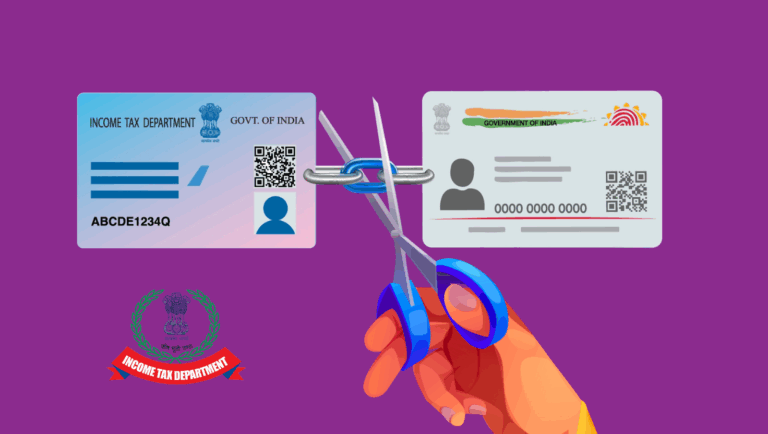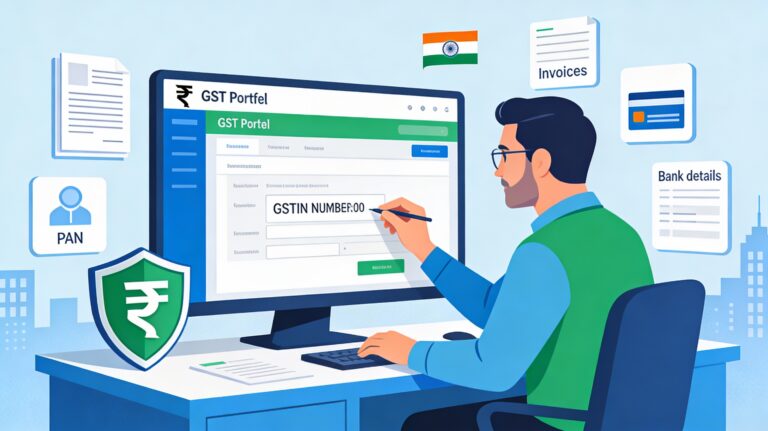
In 2025, Indian taxpayers face a tax trap: misreporting Section 194J TDS receipts under Section 44AD instead of 44ADA sparks Income Tax Department scrutiny. AI-driven audits and Form 26AS mismatches trigger notices, penalties, and audits. Uncover why freelancers and businesses are caught in this presumptive taxation puzzle, explore Finance Bill 2025 updates, and learn expert tips to avoid costly errors.
In 2025, an increasing number of Indian taxpayers and professionals are being flagged by the Income Tax Department (ITD) due to how they classify their income and which presumptive taxation scheme they select. A focal point for scrutiny is the reporting of receipts subjected to Tax Deducted at Source (TDS) under Section 194J but declared under Section 44AD, rather than the more appropriate Section 44ADA. While both sections offer simplified compliance through presumptive taxation, their intended scope, eligibility, and implications differ significantly. Understanding this distinction is crucial for small businesses and professionals who want to avoid tax notices, audits, and unnecessary litigation.
Presumptive Taxation in India: The Basics
What Are Section 44AD and Section 44ADA?
Both Section 44AD and Section 44ADA fall under the Presumptive Taxation Scheme (PTS) introduced by the Income Tax Act to ease the compliance burden for small taxpayers.
- Section 44AD: Targets small businesses, including traders, manufacturers, and service providers (excluding specified professions), with turnover up to ₹3 crore (as of Budget 2023, if 95% of receipts are digital). Taxable profit is presumed at 6% (for digital) or 8% (for cash) of gross turnover.
- Section 44ADA: Specifically designed for professionals like doctors, lawyers, accountants, architects, consultants, and similar specified professions. For FY 2024-25, this section applies to gross receipts up to ₹75 lakh (if digital receipts are 95% or more), with presumptive income set at 50% of gross receipts.
Why Was Presumptive Taxation Introduced?
India’s vast population of small businesses and professionals often struggle with complex bookkeeping and compliance costs. PTS streamlines compliance by allowing eligible taxpayers to declare a fixed percentage of their income as profit, avoiding the requirement to maintain detailed books or undergo audits—unless certain thresholds are breached.
Real-World Example
Suppose a freelance software developer receives ₹40 lakh in consulting payments, and TDS is deducted under Section 194J. Misreporting these earnings under Section 44AD (intended for business income) instead of 44ADA (meant for professional income) can trigger red flags and scrutiny.
TDS Under Section 194J: The Crux
What Does Section 194J Cover?
Section 194J mandates TDS on payments towards professional and technical services, royalty, non-compete fees, and directors’ remuneration at prespecified rates, typically 10% (2% for technical fees).
Who Is Responsible for Deduction?
TDS under 194J must be deducted by companies, firms, and even individual/HUF entities if subject to tax audit. Notably, professional receipts subject to 194J deductions are generally associated with services provided by professionals as defined under Section 44AA.
Why Zero Brokerage Isn’t Always Free in 2025 — Avoid These Common Beginner Traps!
Are We Taxed Around 33% from Our Salary and Then Taxed Again as We Spend What’s Left? Why?
Indian Railways Fare Hike: What Travellers Need to Know Starting December 26, 2025
Hidden Reasons for Personal Loan Rejections Despite Good CIBIL Scores
Mismatch Problem: Income Declaration vs. TDS Head
The issue arises when the recipient of payments classified under 194J (professional services) chooses to report those under Section 44AD (business income) instead of 44ADA (professional income). Automated IT systems compare Form 26AS (showing TDS details) with entries in the income tax return (ITR). When the two don’t align, the return is flagged, and the taxpayer faces scrutiny and demands for extensive documentation.
Section 44AD vs. 44ADA: A Detailed Comparison
To understand why taxpayers are facing issues, let’s break down the key differences between Section 44AD and Section 44ADA.
Section 44AD: Presumptive Taxation for Small Businesses
Section 44AD is designed for small businesses, including traders, manufacturers, and service providers (excluding specified professions). It offers a streamlined tax process for those with modest turnovers.
- Eligibility:
- Resident individuals, Hindu Undivided Families (HUFs), and partnership firms (excluding Limited Liability Partnerships, LLPs).
- Businesses with annual turnover up to ₹3 crore (if 95% of receipts are digital, as per Budget 2023) or ₹2 crore otherwise.
- Excludes businesses involved in plying, hiring, or leasing goods carriages (covered under Section 44AE), agency, commission, or brokerage income.
- Presumptive Profit:
- 6% of turnover for digital receipts.
- 8% of turnover for cash receipts.
- Key Features:
- No need to maintain detailed books of accounts or undergo audits unless profit declared is below the presumptive rate or turnover exceeds the threshold.
- Taxpayers must file ITR-4 (Sugam).
- A 5-year lock-in applies: if a taxpayer opts out before five years and declares lower profits, they are barred from using Section 44AD for the next five years.
- Example: A retailer with a turnover of ₹2.5 crore, where 95% of receipts are digital, can declare ₹15 lakh (6% of ₹2.5 crore) as taxable income under Section 44AD without maintaining books.
Section 44ADA: Presumptive Taxation for Professionals
Section 44ADA targets professionals in specified fields, offering a higher presumptive profit rate due to the nature of professional services.
- Eligibility:
- Resident individuals, HUFs, and partnership firms (excluding LLPs) engaged in professions listed under Section 44AA(1), such as:
- Legal (lawyers, advocates).
- Medical (doctors, dentists).
- Engineering and architectural services.
- Accountancy (chartered accountants, cost accountants).
- Technical consultancy, interior decoration, and other notified professions.
- Gross receipts up to ₹75 lakh (if 95% of receipts are digital, as per Budget 2023) or ₹50 lakh otherwise.
- Resident individuals, HUFs, and partnership firms (excluding LLPs) engaged in professions listed under Section 44AA(1), such as:
- Presumptive Profit:
- 50% of gross receipts is deemed taxable income.
- Key Features:
- No need for detailed bookkeeping or audits unless gross receipts exceed ₹75 lakh or declared profit is less than 50%.
- Taxpayers can file ITR-4 (Sugam) or ITR-3 if additional income sources exist.
- No 5-year lock-in, offering flexibility to switch to regular taxation.
- Example: A freelance lawyer with ₹60 lakh in digital receipts declares ₹30 lakh (50% of ₹60 lakh) as taxable income under Section 44ADA, avoiding the need for detailed accounts.
Comparison Table: Section 44AD vs. Section 44ADA
| Aspect | Section 44AD (Business) | Section 44ADA (Profession) |
| Eligibility | Resident individuals, HUFs, partnership firms (not LLPs) in business (not professions) | Residents in specified professions (legal, medical, engineering, etc.) |
| Turnover/Receipts Limit | ₹3 crore (95% digital) or ₹2 crore | ₹75 lakh (95% digital) or ₹50 lakh |
| Presumptive Profit | 6% (digital) or 8% (cash) | 50% of gross receipts |
| Audit Requirement | If profit < 6%/8% or turnover > threshold | If receipts > ₹75 lakh or profit < 50% |
| ITR Form | ITR-4 (Sugam) | ITR-4 (Sugam) or ITR-3 |
| Lock-in Period | 5 years (if opted out early, barred for next 5 years) | No lock-in period |
Section 194J: The TDS Trigger Point
What Is Section 194J?
Section 194J of the Income Tax Act mandates TDS deduction on payments for:
- Professional services (e.g., fees to lawyers, doctors, accountants).
- Technical services (e.g., consultancy, managerial services).
- Royalties and non-compete fees.
- Directors’ remuneration (non-salary payments).
- TDS Rates:
- 10% for professional services, royalties, and non-compete fees.
- 2% for technical services.
- 20% if the recipient fails to provide a PAN.
- Threshold Limit: Effective April 1, 2025, TDS applies only if payments exceed ₹50,000 per financial year (up from ₹30,000).
- Who Deducts TDS?:
- Companies, firms, and individuals/HUFs subject to tax audit under Section 44AB.
- Government bodies, trusts, universities, and other entities listed under Section 194J.
Why Does Section 194J Cause Issues?
The ITD’s automated systems cross-check Form 26AS (which records TDS details) with the Income Tax Return (ITR). When professional receipts subject to Section 194J TDS are reported under Section 44AD instead of Section 44ADA, the mismatch triggers scrutiny. Here’s why:
- Nature of Income Misalignment: Section 194J typically applies to professional or technical services, which align with Section 44ADA (profession). Reporting these under Section 44AD (business) suggests a misclassification.
- Revenue Impact: Section 44ADA assumes 50% of receipts as profit, significantly higher than the 6–8% under Section 44AD. Misreporting can lead to underreported income and lower tax liability, prompting ITD scrutiny.
- AI-Based Detection: In 2025, the ITD uses advanced AI systems to flag discrepancies between TDS categories and ITR declarations, leading to notices under Section 142(1).
Real-World Example
Consider Sneha, a freelance software consultant earning ₹40 lakh in FY 2024-25, with ₹4 lakh TDS deducted under Section 194J. She mistakenly files under Section 44AD, declaring ₹2.4 lakh (6% of ₹40 lakh) as profit. The ITD’s system flags the mismatch, as Section 194J suggests professional income, which should be under Section 44ADA (50% profit = ₹20 lakh). Priya receives a notice under Section 142(1), demanding:
- Books of accounts (balance sheet, P&L).
- Bank statements reconciling credits.
- Proof of business activities (invoices, contracts).
- Reconciliation of Form 26AS with ITR.
This scenario highlights the importance of aligning income classification with the correct presumptive scheme.
Why Are Taxpayers Facing Scrutiny ?
The Role of AI and Automated Scrutiny
In 2025, the ITD’s reliance on AI-based systems has intensified. These systems compare:
- Form 26AS/TIS/AIS: TDS details, including Section 194J deductions.
- ITR Entries: Income head (business vs. profession) and presumptive scheme chosen.
- Profit Ratios: Whether the declared profit aligns with the expected 6–8% (Section 44AD) or 50% (Section 44ADA).
If Section 194J TDS receipts are reported under Section 44AD, the system flags the return for:
- Potential Misclassification: Professional income reported as business income.
- Underreporting: Lower profit declaration (6–8% vs. 50%) reducing tax liability.
- Non-Compliance: Failure to maintain books or undergo audits if profit is below the presumptive rate.
Notices under Section 142(1) may demand extensive documentation, including:
- Proof of business vs. profession (e.g., trade licenses, engagement letters).
- Bank statements showing all credits/debits.
- Reconciliation of Form 26AS, ITR, and TDS statements.
Common Mistakes Leading to Scrutiny
- Misunderstanding Income Nature:
- Taxpayers may assume Section 194J TDS mandates Section 44ADA, even if their activities qualify as a business under Section 44AD. For example, a bookkeeper (not a specified profession) may correctly use Section 44AD, but the TDS deduction under Section 194J triggers scrutiny.
- Seeking Lower Taxable Income:
- Some taxpayers opt for Section 44AD to declare lower profits (6–8% vs. 50%), unaware that professional income must be under Section 44ADA. This can lead to notices and penalties.
- Payer Errors:
- Clients may incorrectly deduct TDS under Section 194J for non-professional services. Taxpayers must clarify the nature of their income in the ITR, supported by documentation.
- Lack of Documentation:
- Failing to maintain invoices, contracts, or proof of business activities makes it harder to justify Section 44AD usage during scrutiny.
- Revenue Impact:
- 44ADA deems 50% of gross receipts as profit, substantially higher than the 6–8% under 44AD. Hence, reporting professional receipts under 44AD can understate profit, leading to lower taxes—and sharper tax scrutiny.
Consequences of Misclassification
- Notices and Audits: Notices under Section 142(1) or mandatory audits under Section 44AB if profit is below the presumptive rate or thresholds are exceeded.
- Penalties: Under Section 270A, misreporting income can attract penalties up to 200% of the tax evaded.
- Refund Reversals: Claiming excessive refunds due to lower profit declarations can lead to reversals with interest under Sections 234A/B/C.
- Increased Compliance Costs: Prolonged disputes and audits negate the benefits of PTS.
Expert Insights: What Should Taxpayers Do?
Nature of Income is Supreme
Expert practitioners, including CA Himank Singla and Anita Basrur, emphasize:
- The nature of income—business or profession—must determine the appropriate presumptive section, irrespective of the TDS section applied by the payer.
- Even if TDS under 194J is applied erroneously by the client/customer, if receipts are genuinely from a business and not a profession listed in 44AA(1), Section 44AD can be used—provided proper documentation is maintained.
- Conversely, if the activity performed is a specified profession, the taxpayer must use Section 44ADA, even if the client failed to deduct TDS under 194J.
Action Steps for Taxpayers
- Assess whether the income arises from a business or a specified profession as per the Income Tax Act’s definitions—ignore what section was used for TDS deduction.
- Maintain clear documentation: engagement letters, invoices, nature of services provided, proof of business establishment.
- Reconcile Form 26AS, ITR, and supporting documents to show consistency.
- Seek professional help or a CA’s opinion if in doubt, especially when handling significant amounts or responding to ITD queries.
The Income Tax Bill 2025: New Updates & Clarifications
- Higher Turnover Limits: The threshold has increased to ₹3 crore for businesses (Section 44AD) and ₹75 lakh for professionals (Section 44ADA) if digital receipts are over 95%.
- Declaring Actual Profit: If actual profit is higher than the presumptive percentage, taxpayers must declare the higher profit amount.
- Audit and Books: Taxpayers declaring less than required presumptive profit must maintain books and may be subject to audit.
- Lock-in and Flexibility: Five-year lock-in for businesses under 44AD, but not for professionals under 44ADA.
Penalties and Real-Life Consequences
- Misclassification can result in scrutiny notices under Section 142(1), demands for documents, disallowances, and even penalties under Section 270A (misreporting of income).
- Disallowance of the presumptive rate can lead to mandatory audit, tax adjustments, interest, and further scrutiny in subsequent years.
- Prolonged disputes increase compliance costs and stress for small taxpayers.
Final Thought
The current surge in tax scrutiny for those reporting Section 194J TDS receipts under Section 44AD instead of 44ADA stands as a reminder that the spirit—and not just the letter—of the law matters in income classification. Taxpayers, especially freelancers, consultants, and small businesses, must understand the true nature of their income and reconcile it with the proper section of the presumptive taxation scheme. The right classification in 2025 means smoother compliance, fewer tax worries, and a fairer contribution to India's tax base.
Those choosing or advising on Indian tax compliance must look beyond TDS deduction sections and instead focus on the substance of business activities. With the government's improved digital monitoring, AI-based scrutiny, and updated thresholds under the new Income Tax Bill, accurate reporting as per the nature of income is now more crucial than ever for India's honest taxpayers.

































